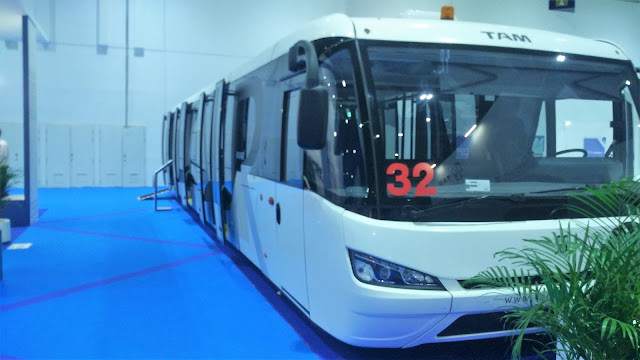BAe's Infantry Vehicle Industrial Base Faces Shutdown
After more than 30 years designing and delivering combat vehicles built to help soldiers take on some of the battlefield’s toughest threats, employees at BAE Systems and hundreds of suppliers across the United States are facing a threat of their own: an industrial base shutdown.
Unless the U.S. Congress commits to an adequate investment, the U.S. Army’s current funding plan will force a complete closure of the Bradley industrial base production and supply chain from 2014 to 2017. That shutdown will result in serious long-term consequences for the U.S. Army and taxpayers and the loss of unique industrial capabilities, military preparedness, skilled labor and jobs across the country.
What is the Bradley Industrial Base?
The Bradley industrial base is a production and supply chain network of more than 586 large, medium and small businesses from 44 states and the District of Columbia working with the U.S. government to maintain the readiness of four out of five key vehicles used by the U.S. Army’s Armored Brigade Combat Teams (ABCTs). With its primary hub of operations located at BAE Systems’ manufacturing facility in York, Pennsylvania, the industrial base supports the readiness, maintenance, upgrades and/or development of the:
*. Bradley Fighting Vehicle
*. M88 recovery vehicle
*. M109 Family of Vehicles
*. M113 personnel carrier
The Bradley industrial base and its facilities maintain the only proven design capability and unique skill sets required to manufacture and maintain these vehicles and other future combat platforms in development for the ABCTs.
What are the consequences of a shutdown?
With production scheduled to end for at least three years, the businesses that make up the Bradley industrial base will be unable to maintain the infrastructure to support tracked combat vehicles and the dedicated and highly skilled workforce needed to continue to produce specialized parts for these vehicles in a timely and cost-effective way.
In addition, to restart production and the supply line after the Army’s planned three-year shut down would cost taxpayers $750 million.
What is the solution?
BAE Systems has proposed that Congress provide a base level investment in critical combat vehicle improvements and upgrades that will maintain the U.S. Army’s combat capability and bridge the three-year shutdown gap. This investment will address several unmet needs previously highlighted by the Army and will ultimately save taxpayers money in the long-term by maintaining the capabilities and skilled workforce of the industrial base, while eliminating the need to incur the significant costs to restart the Bradley manufacturing line. The proposal includes:
*. Survivability improvements for the current Bradley fleet and further upgrades to meet Army and National Guard needs; and
*. Upgrades to the M88 recovery vehicle to meet emerging battlefield threats and maintain its ability to keep up with and tow equipment that is becoming increasingly heavier in the Armored Brigade Combat Teams.
Unless the U.S. Congress commits to an adequate investment, the U.S. Army’s current funding plan will force a complete closure of the Bradley industrial base production and supply chain from 2014 to 2017. That shutdown will result in serious long-term consequences for the U.S. Army and taxpayers and the loss of unique industrial capabilities, military preparedness, skilled labor and jobs across the country.
What is the Bradley Industrial Base?
The Bradley industrial base is a production and supply chain network of more than 586 large, medium and small businesses from 44 states and the District of Columbia working with the U.S. government to maintain the readiness of four out of five key vehicles used by the U.S. Army’s Armored Brigade Combat Teams (ABCTs). With its primary hub of operations located at BAE Systems’ manufacturing facility in York, Pennsylvania, the industrial base supports the readiness, maintenance, upgrades and/or development of the:
*. Bradley Fighting Vehicle
*. M88 recovery vehicle
*. M109 Family of Vehicles
*. M113 personnel carrier
The Bradley industrial base and its facilities maintain the only proven design capability and unique skill sets required to manufacture and maintain these vehicles and other future combat platforms in development for the ABCTs.
What are the consequences of a shutdown?
With production scheduled to end for at least three years, the businesses that make up the Bradley industrial base will be unable to maintain the infrastructure to support tracked combat vehicles and the dedicated and highly skilled workforce needed to continue to produce specialized parts for these vehicles in a timely and cost-effective way.
In addition, to restart production and the supply line after the Army’s planned three-year shut down would cost taxpayers $750 million.
What is the solution?
BAE Systems has proposed that Congress provide a base level investment in critical combat vehicle improvements and upgrades that will maintain the U.S. Army’s combat capability and bridge the three-year shutdown gap. This investment will address several unmet needs previously highlighted by the Army and will ultimately save taxpayers money in the long-term by maintaining the capabilities and skilled workforce of the industrial base, while eliminating the need to incur the significant costs to restart the Bradley manufacturing line. The proposal includes:
*. Survivability improvements for the current Bradley fleet and further upgrades to meet Army and National Guard needs; and
*. Upgrades to the M88 recovery vehicle to meet emerging battlefield threats and maintain its ability to keep up with and tow equipment that is becoming increasingly heavier in the Armored Brigade Combat Teams.




Comments
Post a Comment